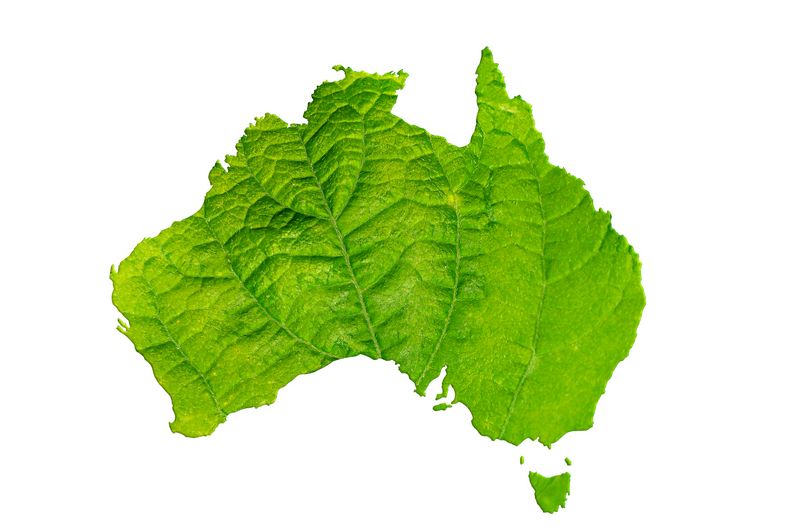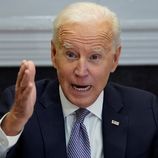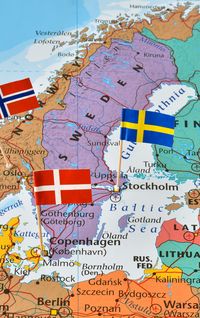SSA issuance Down Under was hampered last year by the global pandemic, but this year is likely to see a bounce back with many of the bond sales sustainable.
The Kangaroo market has remained robust this year, with a distinct environmental, social and corporate governance flavour to much of the debt.
“A couple of things were at play earlier this year,” said Craig Johnston, head of DCM syndicate, Australia and New Zealand at Deutsche Bank. “We had a bit more stability in the rates market, yield curve control with government bonds and quantitative easing. Investors were still looking to invest in defensive products but maximise their yields. How they did that was to look at local semi-government paper and Kangaroo SSA issuance.”
Last year was not a massive one for SSA issuance Down Under. After A$30bn (US$23bn) issuance in 2019, volumes slipped to A$21bn last year. But issuance was already at A$8bn at the tail-end of the first quarter, according to ANZ.
What has helped is the international standing of the economy. Australia remains in a select group of sovereigns around the world – one of only nine – with the highest rating from all three major agencies.
In the second half of February, Fitch affirmed the country’s AAA status, saying that it had “weathered the pandemic well” compared with peers.
“This performance reflects successful virus containment and an effective fiscal and monetary response consistent with a policy framework that has underpinned the economy’s resilience to shocks over the medium term,” it said, pointing out that real GDP contracted by a manageable 2.8% last year, against a AAA median contraction of 3.8%.
And the economy remains on a very positive path. February unemployment figures dropped to pre-pandemic levels of 5.8%, indeed all states recorded job creation for the first time since the beginning of the pandemic.
“The broad-based increase in jobs is comforting and suggests the labour market recovery will continue,” noted Chidu Narayanan, economist at Standard Chartered in Singapore. The bank has also upgraded its growth forecasts for this year to 4.8% and for next year to 3.3%, on the back of a sharp increase in household consumption.
All of this is a good backdrop to the credit markets. “Credit has performed exceptionally well,” said Harald Eikeland, director – syndicate Australia at ANZ. Even though the basis swap might not be at the elevated levels that have been seen in the past – traditionally a driver of SSA issuance in Australia – he points to the steepness of the cross-currency basis curve, specifically in the five to 10-year part.
But what is notable this year is the extent to which the SSA issues which have stood out are ESG.
First out of the gates at the very beginning of January was the EIB with an upsized A$1.25bn 0.75% 6.5-year climate awareness Kangaroo.
The largest single-tranche sustainable Kangaroo bond – it beat the World Bank’s A$1.65bn two-part deal from November last year – it saw an order book in excess of A$1.4bn and participation from more than 50 investors. Proceeds will be allocated to EIB’s lending to activities that contribute substantially to climate change mitigation in line with evolving EU sustainable finance legislation.
“Over the past few years, we have tried to be early out of the blocks in the Kangaroo market,” said Eila Kreivi, EIB's head of capital markets, specifically this time, she said, to capture investor attention.
Not only was SSA issuance muted last year, but it was also comparatively ESG free.
“We haven’t had as many ESG issues in Australia compared to other countries. Issuers just haven’t issued as much in Australian dollars as they have in other currencies,” said Johnston. “But it’s becoming more and more of a focus for investors – it’s in the forefront of everyone’s mind.”
Another line in the sand was drawn in early February when the Asian Development Bank sold its first education Kangaroo bond. A A$75m 10-year private placement to Dai-ichi Life Insurance, it was not a massive deal, but it was significant as an inaugural structure tested in the Australian market.
Proceeds would be used, said ADB treasurer Pierre Van Peteghem, to support “those among our developing members whose education systems have been severely disrupted by the Covid-19 pandemic”.
The bank cited the around 1.7 billion students worldwide who had been affected by school closures during the pandemic and that it wanted to double its annual commitments to education to US$2bn by 2023.
“Developing countries were already grappling with a learning crisis, given that students were not learning enough,” said ADB education sector group chief Brajesh Panth. “The pandemic has exacerbated inequities and widened learning gaps. We must improve planning, coordination, and partnerships – ensuring quality and resilient education systems and learning for all.”
Most recently, just before the quarter closed in late March, NRW Bank sold a A$350m 1.05% five-year debut social Kangaroo.
“We deliberately placed our second ... social bond in the Australian capital market because – similar to Europe – investor interest in sustainability bonds is particularly high here,” said NRW.Bank board member Michael Stoelting.
This type of deal is likely to be seen regularly for the rest of the year.
There is certainly an appetite for it. As ANZ’s Eikeland points out, although the larger onshore asset managers do have dedicated green or ESG funds, the appetite for ESG paper is broader. “It’s not just dedicated green funds that will buy a green bond, there are bank balance sheets that will be motivated by an ESG angle as well,” he said, adding that this demand makes spreads tighter too.
Last year saw a crowding-out effect from individual states, with debt raised by New South Wales, Victoria and Queensland in particular dominating the issuance landscape. With much of that debt front-loaded, this has left the field clear for other SSAs, and with ESG the clear flavour of the month, mandates are going to continue to rise, in a manner that several bankers describe as exponential.
New Zealand on the up
Across the Tasman Sea, while there were only two Kauri issues in the first quarter of the year, there is a sense of anticipation on the back of record issuance of NZ$6.5bn (US$4.6bn) last year.
Norwegian local government funding agency Kommunalbanken was first to appear with a NZ$125m tap of its 1.25% 2030s, and then, at the end of January, ADB appeared with a NZ$700m seven-year at 1.125%. The latter was more than doubled from an indicative size of NZ$300m.
Demand for debt in New Zealand dollars was confirmed at the very beginning of February by the DMO’s blowout NZ$3.5bn 0.5% five-year. With a minimum size of NZ$2bn, orders swelled NZ$7.5bn thanks to the economy’s performance and the way that it has handled the Covid-19 pandemic.
“I’ve seen a lot of confidence in how New Zealand has managed for the last 12 months and how the economy is going. It’s still a relatively robust economy and you have pockets of demand domestically that need to invest and they do like the SSA product,” said Deutsche Bank's Johnston.
The final pat on the back came from S&P at the end of February with a one-notch upgrade to AA+. “New Zealand’s monetary flexibility, wealthy economy, and institutions are conducive to swift and decisive policy actions and offset the country’s external imbalances,” the agency noted.
Indeed, so confident is the central bank of the economy’s performance, that at the beginning of March, the Reserve Bank removed some of the temporary liquidity facilities put in place during the Covid-19 pandemic – a term auction facility and the Corporate Open Market Operation, both of which allowed banks to borrow funds.
“Financial market conditions have improved significantly since March 2020 when these facilities were introduced and the usage of these special facilities has been very low in the last six months,” said Vanessa Rayner, head of financial markets at the Reserve Bank.
So, what does it mean for future issuance? There might have been only NZ$825m issued across two deals so far, but as a number of bankers point out, by the end of the first quarter last year there had been only NZ$900m.
The basis swap does remain one key indicator, but it is not by any means the only one.
“The NZD basis is one key driver for the market – at least for the short/medium term. If the NZD basis is lower, then reoffer spreads need to be tighter to attract SSA issuers – all else being equal,” said Glen Sorensen, director – debt syndicate, ANZ Markets in New Zealand.
But you cannot look at the basis in isolation to determine issuance, he said, pointing out that Kauri primary volumes rose significantly between April 2020 and early January 2021 – right at the same time that the basis concurrently and steadily fell.
“Underlying market volatility and investor focus on managing duration concerns represent some of the key factors impeding the Kauri primary market over recent weeks,” he said.
The green tendencies that have been seen in Australia are also starting to cross the Tasman. “We have seen significant and growing ESG issuance from domestic borrowers in NZD, but less so from the SSA sector at this stage,” said Sorensen, although he added that the potential was growing as ESG awareness and policies within the New Zealand investor community developed.
The first green Kauri bond arrived from IFC in July 2017 – NZ$125m 3.75% of 10-year paper. Since then, there has been a steady trickle that peaked in November last year with a blockbuster NZ$1.3bn two-part 5.5-year and 10-year bond from the World Bank.
“The dual-tranche trade allowed us to reach different investor groups and other them a high-quality, liquid product,” said Andrea Dore, head of funding at the World Bank, describing it as a “fantastic trade”.
Demand is only going to go one way. The government announced mandatory climate risk reporting last year and the Climate Change Commission’s draft report was released in January for consultation.
“This has helped the focus on the importance of ESG and drive interest from issuers,” said Sorensen.
To see the digital version of this report, please click here
To purchase printed copies or a PDF of this report, please email gloria.balbastro@lseg.com




























